Savin’ Seeds, Killin’ Weeds
Bolting Plants
Last week I was admiring a vegetable garden where just about every lettuce plant was reaching skyward, with flower buds about to cap the tops of the spires. Isn’t that the wrong way to grow lettuce?
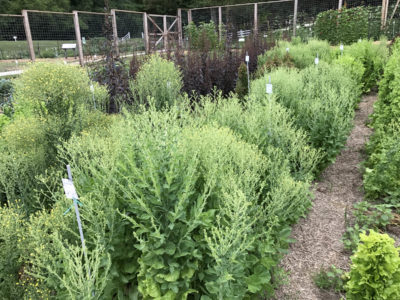 Lettuce that flowers — “goes to seed” — becomes bitter and tough. In my own garden, I aspire to have no lettuce spires by sowing lettuce seeds every couple of weeks for a regular harvest of mild-flavored, succulent leaves or heads. The plants don’t have time to bolt.
Lettuce that flowers — “goes to seed” — becomes bitter and tough. In my own garden, I aspire to have no lettuce spires by sowing lettuce seeds every couple of weeks for a regular harvest of mild-flavored, succulent leaves or heads. The plants don’t have time to bolt.
Those bolting lettuces I was admiring were in a garden in Iowa, one of the gardens at the Seed Savers Exchange (www.seedsavers.org), an organization that every gardener should know about and a garden that I should have not waited so long to visit. The mission of Seed Savers Exchange is to save and preserve heirloom seeds, which are varieties that have been passed on down among generations of farmers and gardeners. Taste some heirloom tomatoes and it’s understandable why these varieties have been saved and passed on. Belgian Giant tomato may not have the smooth, round shape of a modern Big Boy tomato, but this heirloom is well worth growing for its complex, sweet-tart flavor.
One way that Seed Savers fulfills their mission is by growing and saving many varieties of seed. Hence the bolting lettuces I saw there. Some varieties of vegetables, such as most squashes, tomatoes, and cucumbers, spread their pollen too freely. To keep these varieties seed “true,” contamination from foreign pollen is prevented by growing all plants of a particular variety in fine-mesh, insect-proof enclosures.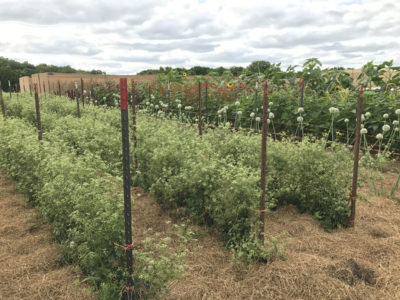
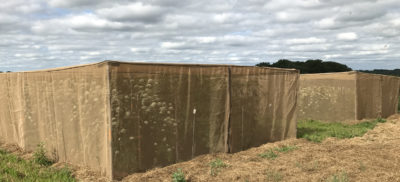
The Seed Saver mission is also fulfilled by so-called “participatory preservation.” An over 13,000 member network of gardeners grow seeds and share them — to the tune of over 23,000 varieties — through an online seed exchange. Anyone can browse the listings but only members can request the seeds.
Not that non-members don’t have access to any of these seeds. Every year, Seed Savers Exchange publishes a seed catalog, from which anyone can order seeds. The names of the old varieties themselves make some of the seeds irresistible: Tolli’s Sweet Italia pepper (better name than flavor), Green Arrow Pea (excellent flavor and high yielding), Jelly Melon cucumber (very interesting name and appearance, but I have yet to try it).
What To Do With Weeds
Ten days absence from my garden, with warm, sunny weather interspersed with rainy days adding up to two inches of rainfall, wrought big changes. Sweet corn and polenta corn reached well over 5 feet in height, flopping stems of staked tomatoes were in desperate need of tying, blueberry stems bowed down with their weight of plump, ripe berries, and . . . weeds were abundant.
Ninety percent of the weeds were Canadian thistle, crabgrass, purslane, 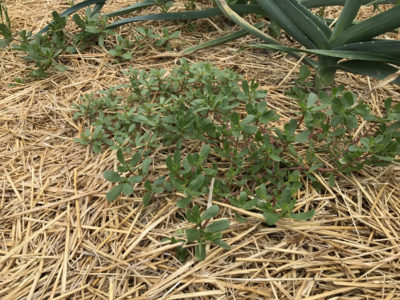 pigweed, common yellow wood sorrel (Oxalis sricta) and — my worst weed — creeping woodsorrel (Oxalis corniculata). I’m jerking each thistle out with a gloved hand. Yes, roots left in the ground will resprout. I’ll just keep jerking them out until they expend all their stored fuel and before new shoots can start pumping new fuel down to the roots, and the plants will die. I poke my hori-hori knife right at the roots of crabgrass and toss the severed tops into the compost bucket.
pigweed, common yellow wood sorrel (Oxalis sricta) and — my worst weed — creeping woodsorrel (Oxalis corniculata). I’m jerking each thistle out with a gloved hand. Yes, roots left in the ground will resprout. I’ll just keep jerking them out until they expend all their stored fuel and before new shoots can start pumping new fuel down to the roots, and the plants will die. I poke my hori-hori knife right at the roots of crabgrass and toss the severed tops into the compost bucket.
Yellow wood sorrel is easy, and sort of fun, to remove; pull the plant and the whole thing comes out easily. Creeping woodsorrel is another story: With brittle stems that creep just below ground level and dirt-colored leaves, it’s hard to see and hard to remove. Most effective is a spray of household vinegar, repeated each time new stems grow.
The way to remove purslane and pigweed is to harvest it — yes, for eating. Unfortunately, I don’t like purslane, so I weed it. But pigweed is a delicious cooked green. I wish I had more of this weed; it cooks down a lot and the harvest was over after two dinners.
Bye, Bye Black Currants
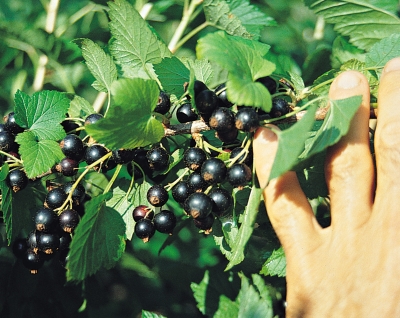
Belaruskaja black currants
I mourn the passing — okay, “mourn” is a bit too strong — of fresh blackcurrants. The harvest was bountiful and long lasting, but now is over. Over twenty quarts of them are in the freezer but those are for eating through the winter.


I am curious how you freeze your 20 quarts of black currants. Are they blanched or sugared? How do you enjoy them in winter after thawing? Do you cook with them or put them on yogurt? I planted 2 black current bushes this year and will be looking forward to using them fresh or preserved.
I just spread them out on a tray and put them in the freezer. Once frozen, I pack them into plastic freezer bags. For use, I take what I want out of the bag and cook it just enough to defrost it in a little water. I like them on my cereal.
Well, I have to admit that I just planted purslane – the only weeds that insist on growing in my wood chip garden are dandelion and grass… and although I know that dandelion is ever so healthy, I weed it.